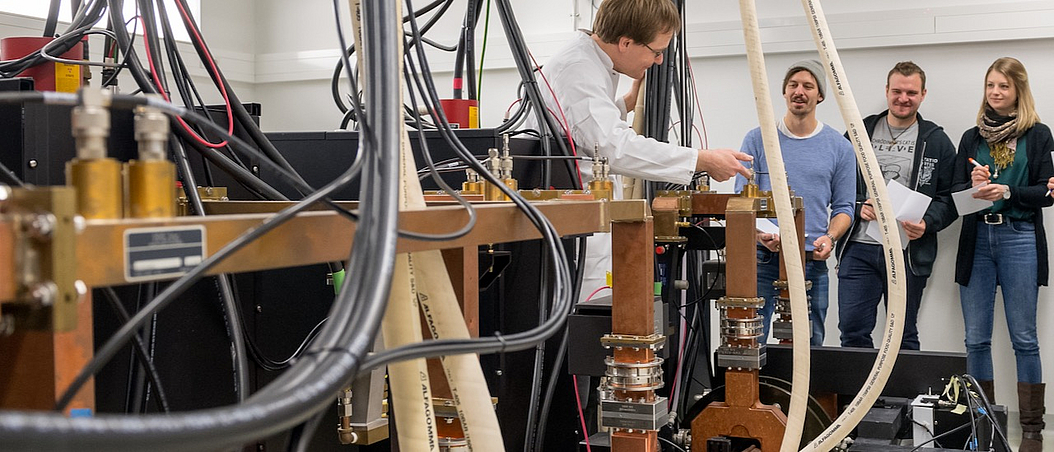
Image: Astrid Eckert / TUM
For some years now it has been possible to generate high-brilliance X-rays using ring-shaped particle accelerators (synchrotron sources) at large facilities. However, such installations are several hundred meters in diameter and cost billions of euros. As an alternative, the world’s first mini synchrotron – the Munich Compact Light Source (MuCLS) – was installed in 2015 at the Technical University of Munich (TUM). It can generate high-brilliance X-rays on a footprint measuring just 5 × 3 meters. The new unit will be used chiefly to research biomedical questions relating to cancer, osteoporosis, pulmonary diseases and arteriosclerosis.
MuCLS creates X-rays through the collision of high-energy electrons with low-energy photons from an infrared laser. Like balls in billiard game, the photons collide with the electrons, absorbing some of their energy and thereby reaching the X-ray range. These collisions can be repeated 65 million times per second as the electrons circulate in a storage ring, and the photons revolve in a resonator. The volume of collisions, and thus the size of the X-ray source, is approximately 45-thousandths of a millimeter: about half the width of a human hair.
In addition to being more compact, the new system has other advantages over conventional X-ray tubes. The X-rays it produces are extremely bright and intense. These brilliant X-rays can distinguish materials better, meaning that are able to detect much smaller tumors in tissue in the future. The MuCLS research activities also include measuring bone properties in osteoporosis and determining altered sizes of pulmonary alveoli in diverse lung diseases. The scientists use the instrument mainly for preclinical research, i.e. examining tissue samples from patients. They also combine the new X-ray source with other systems, such as phase contrast.
The Munich Compact Light Source (MuCLS) is presently operated at the MIBE by the Biomedical Physics group (PI Pfeiffer) as part of the new Center for Advanced Laser Applications (CALA), a joint project between TUM and Ludwig-Maximilians-Universität München (LMU).

Image: Andreas Heddergott / TUM

Image: Andreas Heddergott (TUM)
More Information
Article with a detailed presentation of the facility and the research performed there: The versatile X-ray beamline of the Munich Compact Light Source: design, instrumentation and applications J. Synchrotron Rad. (2020). 27, doi.org/10.1107/S1600577520008309
TUM News Release (29 Okt 2015): New state-of-the-art compact X-ray source
TUM News Release (27 Feb 2017): Miniature particle accelerator saves on contrast agents
MIBE News (15 Jan 2020): Precise Monitoring of the Lung